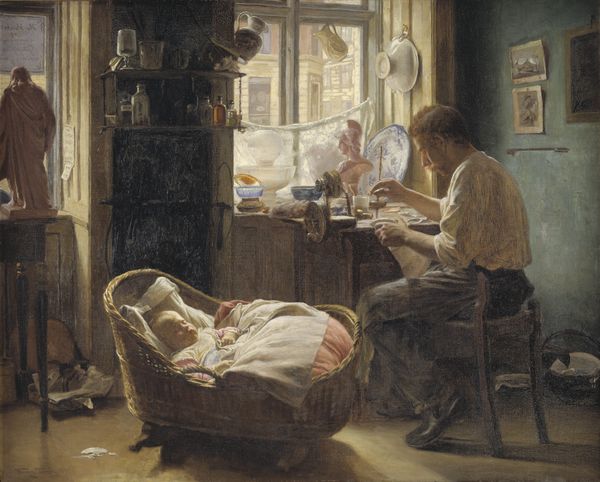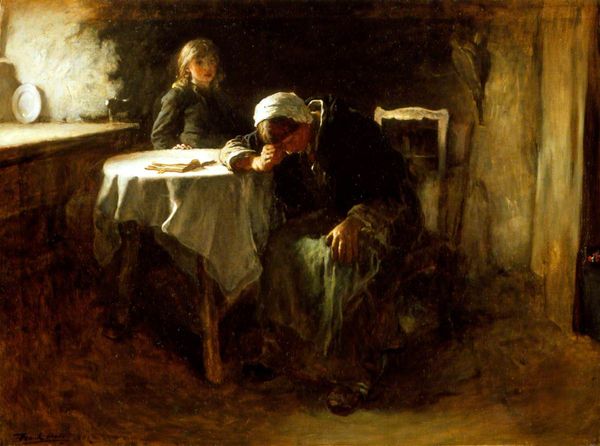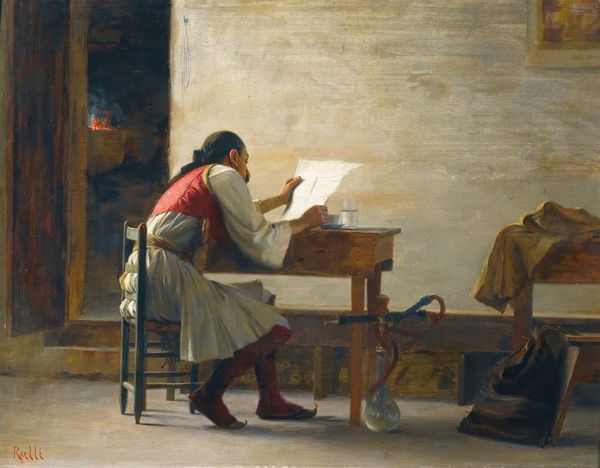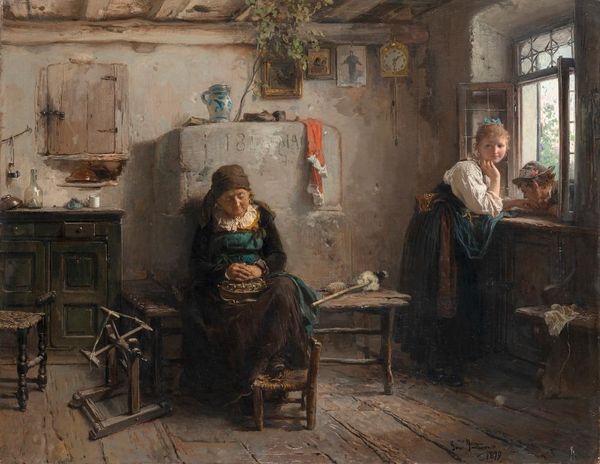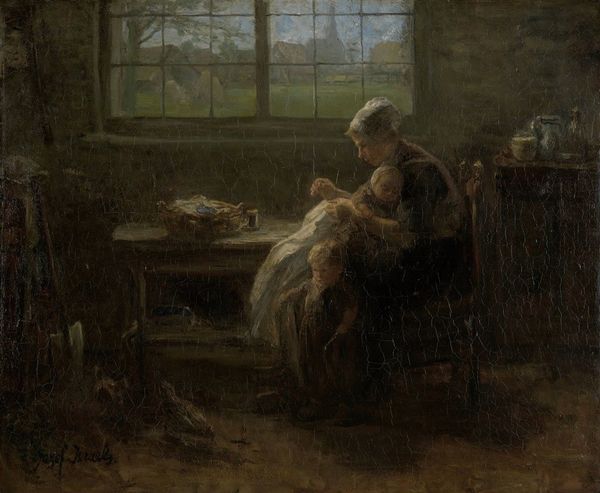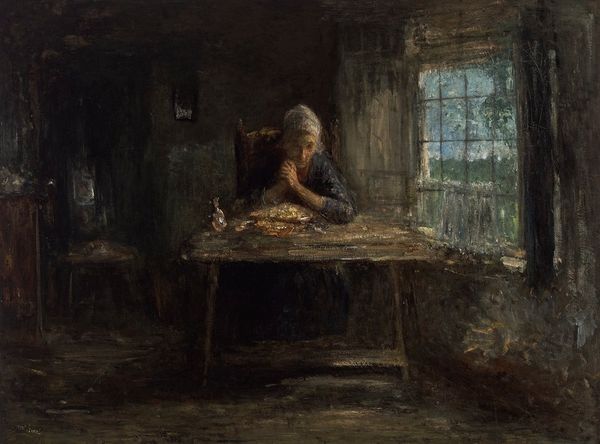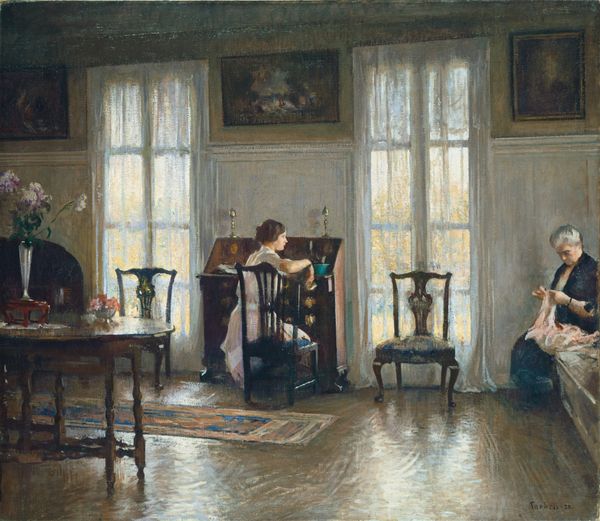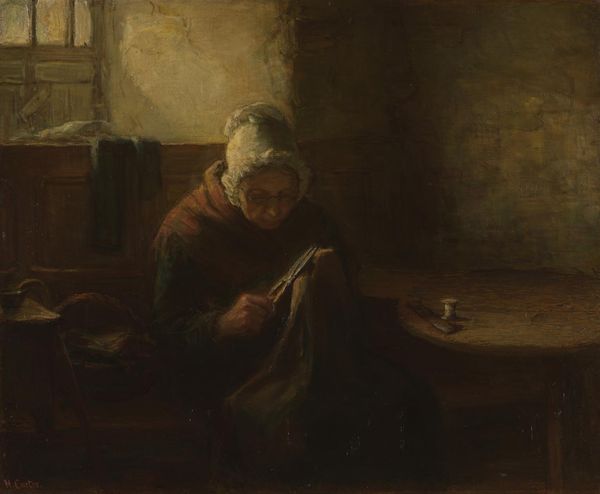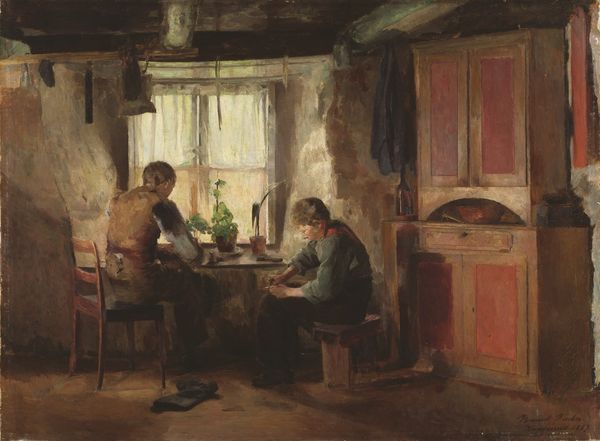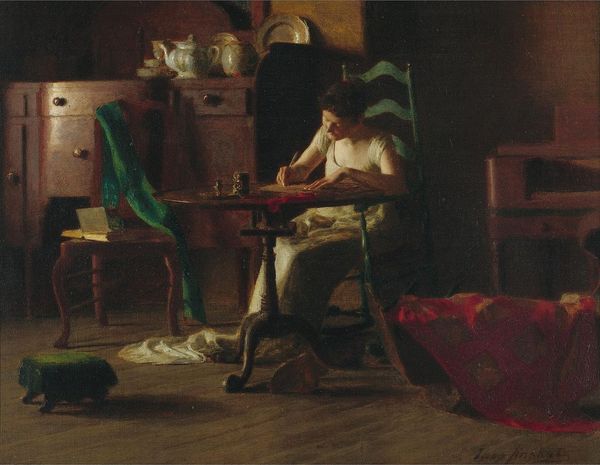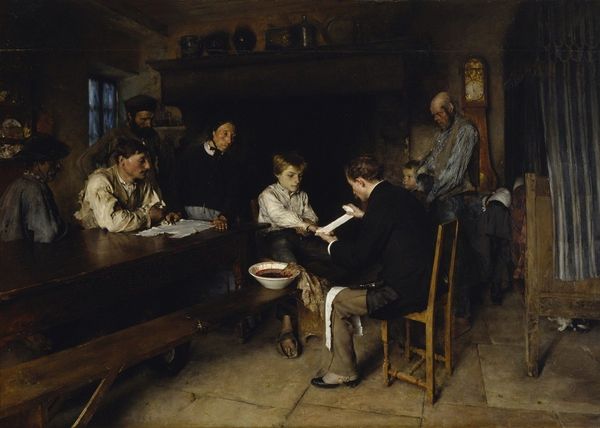
Dimensions: support: 1226 x 1676 mm
Copyright: CC-BY-NC-ND 4.0 DEED, Photo: Tate
Curator: Frank Bramley's large-scale painting, A Hopeless Dawn, currently housed in the Tate Collections, presents us with a poignant scene. Editor: The stark contrast between the bright, cold light flooding in from the window and the warm, muted tones of the interior immediately sets a melancholic tone. Curator: Indeed. Bramley masterfully uses light to guide our eye—note how the window's geometric panes contrast with the flowing forms of the women and the undulating table cloth. Editor: That window light also serves as a painful reminder of the sea outside, a frequent threat to fishing communities and a symbol of the absent men in their lives. The painting speaks to the precarity of women's lives in late 19th century coastal villages, where they were so vulnerable to the whims of the ocean. Curator: I'm drawn to the way Bramley balances realism with an almost idealized depiction of grief, focusing on formal elements such as composition and colour harmony to convey universal emotions. Editor: For me, though, those 'universal emotions' are always grounded in the specific realities of gender, class, and the dangerous conditions these women faced daily. Curator: A dichotomy indeed, one perhaps deliberately intended by the artist, leaving us much to consider. Editor: Yes, an effective snapshot of lives lived on the edge.
Comments
tate 8 months ago
⋮
http://www.tate.org.uk/art/artworks/bramley-a-hopeless-dawn-n01627
Join the conversation
Join millions of artists and users on Artera today and experience the ultimate creative platform.
tate 8 months ago
⋮
The title of this painting comes from a passage by John Ruskin, which affirms that Christ is at the helm of every boat. The kneeling woman, comforted by her mother-in-law, realises that her husband is lost at sea, but the open Bible, altar-like table and print on the wall hint at the consolations of religion. Gallery label, May 2007
